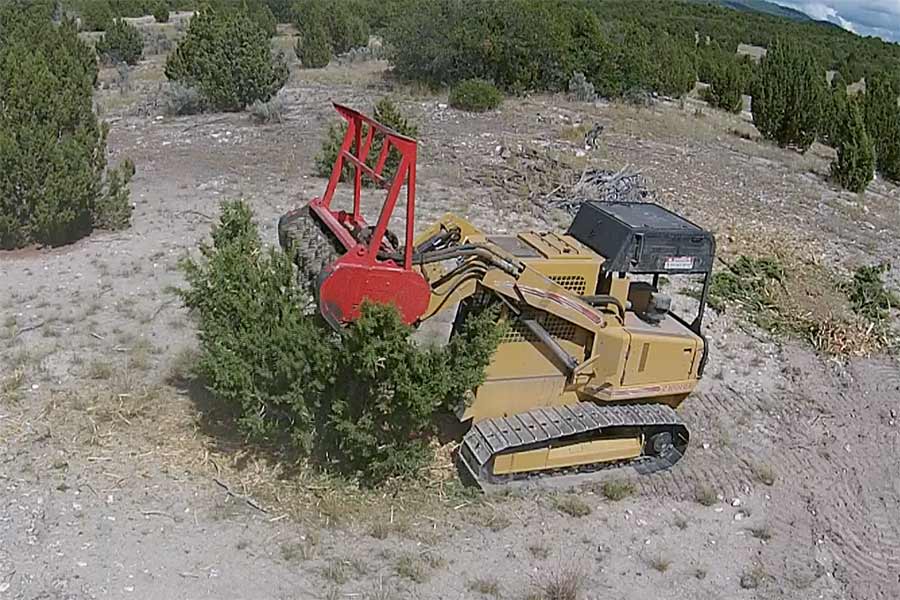Interagency wildfire fuel treatments in Parleys Canyon to address watershed health
Salt Lake City — The multi-agency treatment of wildfire fuels (mulching) in Parleys Canyon will continue with mechanical treatments beginning on Oct. 11 on the south side of I-80. It will continue up to Lambs Canyon as a part of more extensive fuel reduction work to improve watershed health and wildlife habitat.
The Parleys Canyon project is a joint venture between the USDA Forest Service, the state's division of Forestry, Fire, and State Lands, the Utah Division of Wildlife Resources, Summit County, and the Salt Lake City Department of Public Utilities.
This watershed health project received funding through the state's Shared Stewardship agreement with the U.S. Department of Agriculture, funding from the Utah State Legislature through Utah's Watershed Restoration Initiative, and local conservation groups. To see a full list of funding sources, you can visit the Parleys Canyon Watershed Restoration project on the WRI database: https://wri.utah.gov/wri/project/finance.html?id=5885
Laura Briefer, Director of Salt Lake City Department of Public Utilities said, "Wildfires can pose a significant threat to the quality and quantity of Salt Lake City's water supply. SLCDPU is updating its Watershed Management Plan to include proactive wildfire risk mitigation. This involves multi-agency collaboration on forward-thinking wildfire fuels reduction projects like this."
Due to the impacts of fire suppression in the area over the last hundred years, there is an unnatural dense overgrowth of oak brush in this area. The project intends to mimic the results of a natural fire cycle on the landscape by using a bullhog masticator to reduce the overall fuel load.
Reducing the risk of wildfire in the area is crucial to the safety of the surrounding communities and the watershed. The Parleys Creek watershed provides 17–20% of the water supply to Salt Lake City.
Mechanical treatments were chosen as the safest method to ensure that major infrastructure and communities would be safe while allowing for more control over the outcomes and selection of unwanted vegetation.
With the work occurring within the Wasatch-Cache National Forest and on local land, this project has been a collaborative effort and has sought to provide as many benefits to the ecosystem as possible.
"Improving and protecting at-risk watershed's fish and wildlife habitat while increasing forest health and resiliency through collaboration is a priority for the Forest Service," said Bekee Hotze, Salt Lake District Ranger for the Uinta-Wasatch-Cache National Forest.
A byproduct of this fuel work is the effects on wildlife habitat in the area.
"This crucial project will not only reduce fire risk by thinning out the oak brush, but will also create a more diverse plant community which will provide additional food and shelter for many wildlife species," DWR Habitat Restoration Biologist Robby Edgel said.
Currently, there is a native seed bank that is waiting to be released, which will limit the amount of reseeding that will be required.
With work beginning in early October, those participating in the annual hunting season or out enjoying the fall weather should exercise caution and avoid the area.
Work is expected to continue throughout the fall months.

















